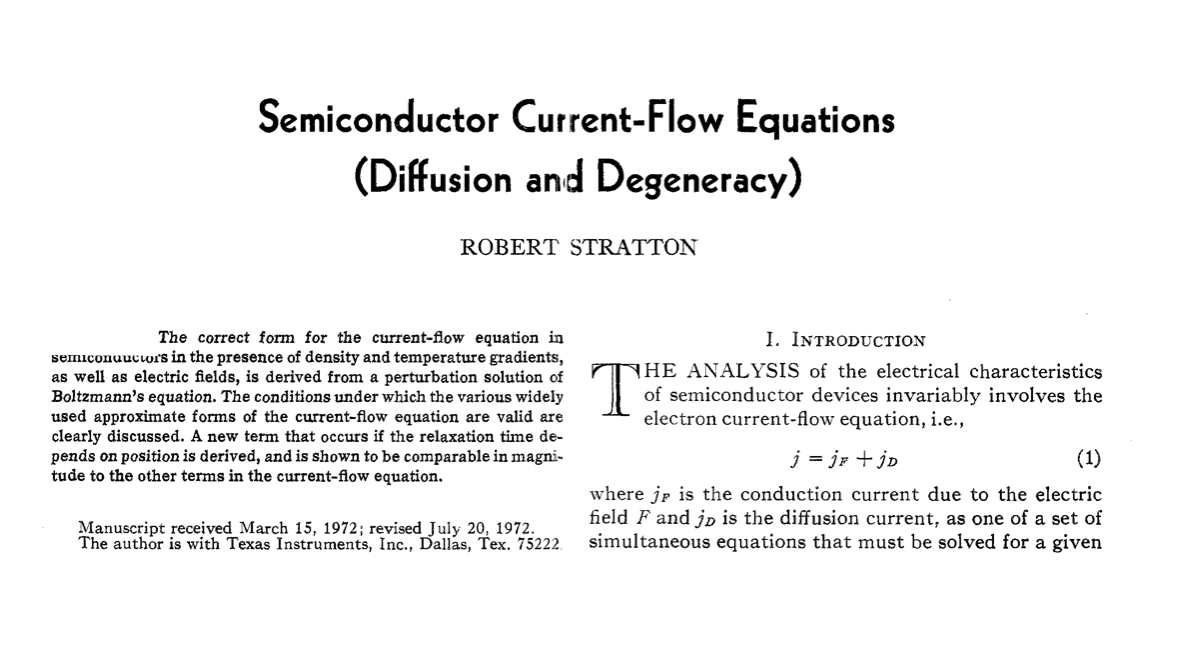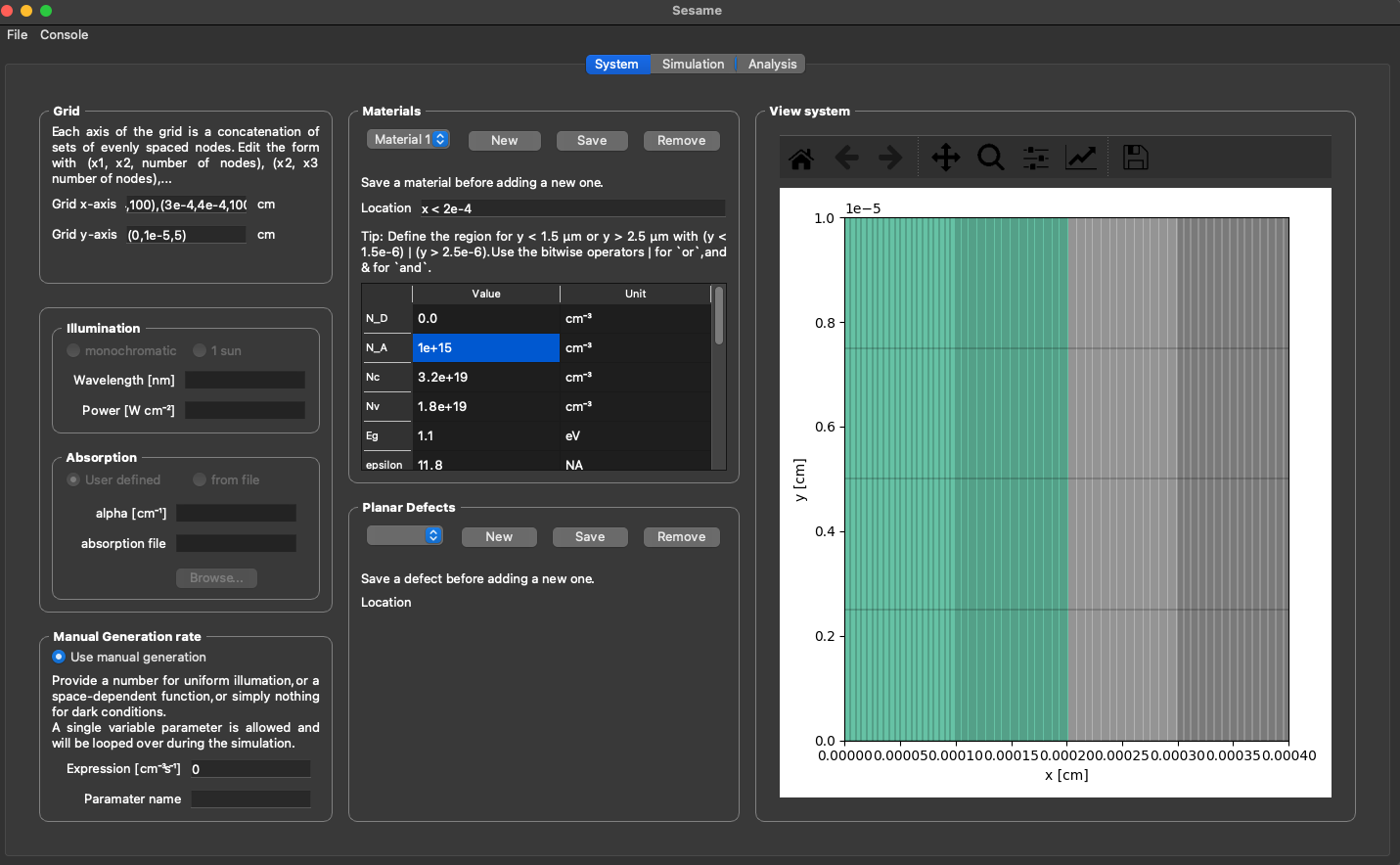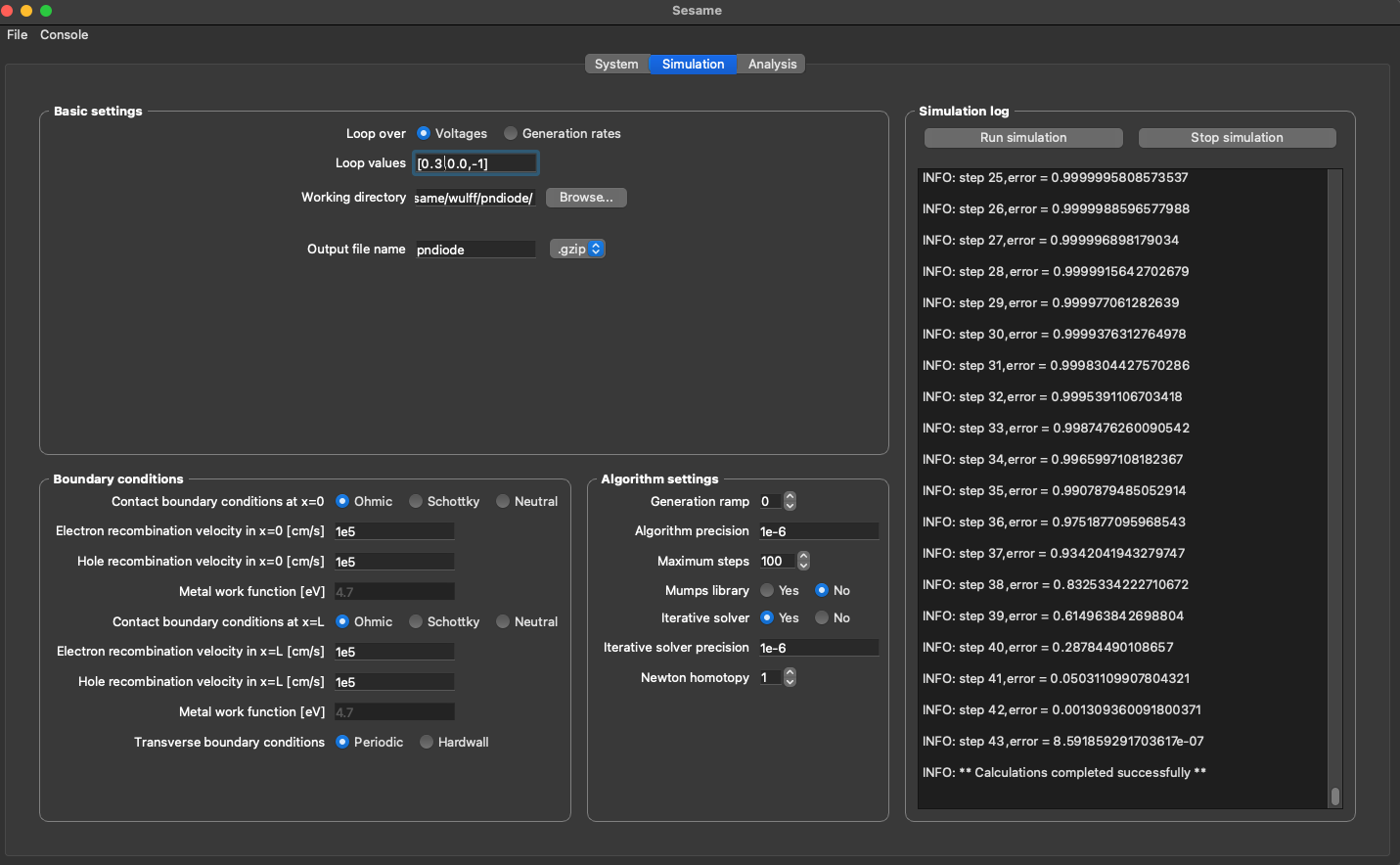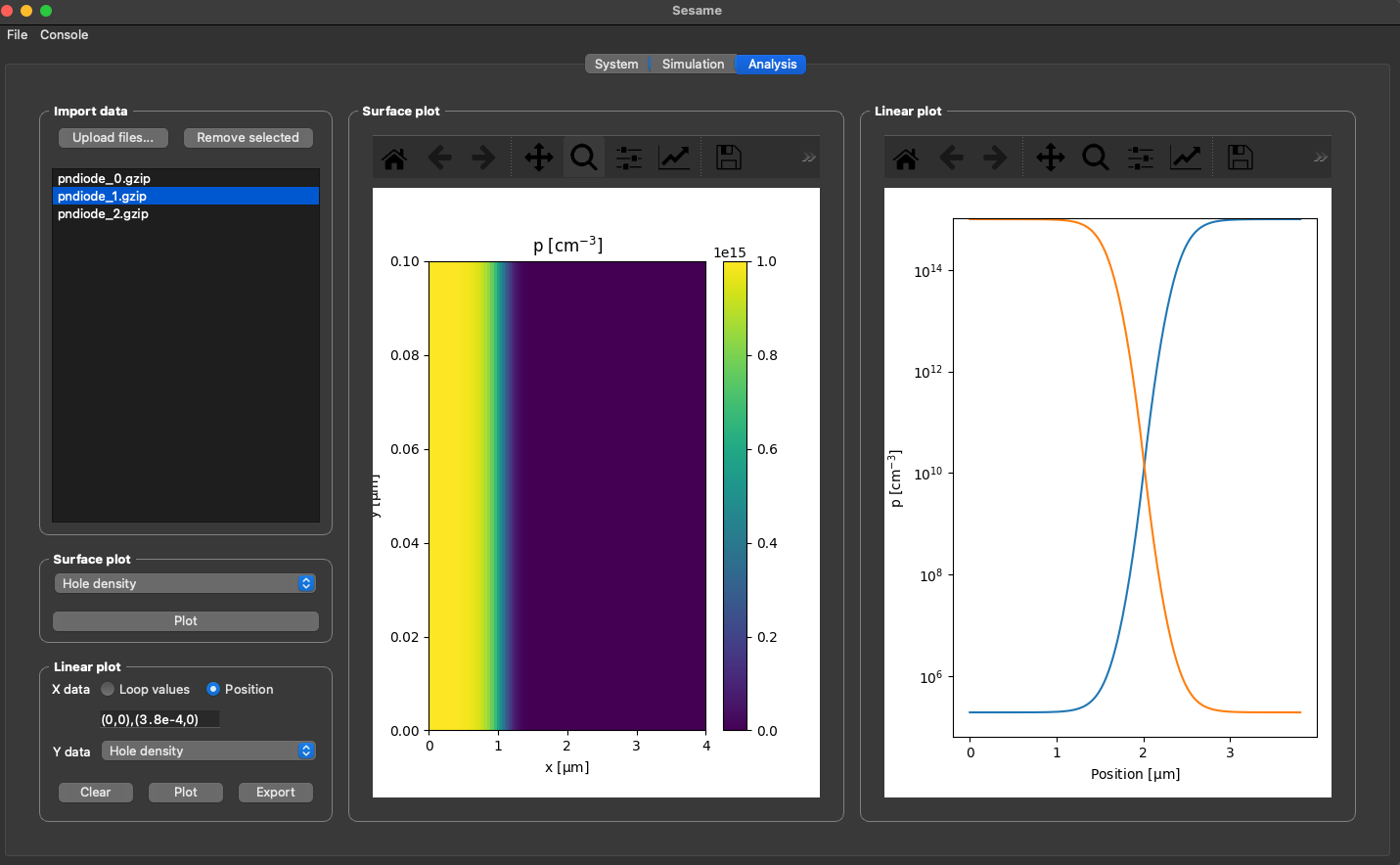l10_spice
- TFE4152 - Lecture 10
- SPICE
- Goal for today
- Simulation Program with Integrated Circuit Emphasis (SPICE)
- Today
- But
- Sources
- Passives
- Transistors
- Transistors
- Predictive technology models (PTM 0.13 um)
- Find right transistor sizes
- A useful unit, \(\mu A/\square\)
- Use unit size transistors for analog design
- \(L = 0.13 \text{ um} \times 1.2 \approx 0.15\text{ um}\)
- \(L = 0.15\text{ um}\)
- \(L = 0.13 \text{ um} \times 4 \approx 0.5\text{ um}\)
- For same \(|V_{eff}|\) there is a factor 6 between NMOS and PMOS in PTM 0.13 um
- What about gm/Id ?
- What about gm/Id ?
- Problem statement: I need bias currents of \([2,4,8] \mu A\) from a \(1 \mu A\) current.
- Stacked transistors
- Current mirror
- Current mirror - Demo
- Problem statement: I need to copy a voltage with a DC gain of 1
- Solution: Unity gain feedback OTA
- More information
TFE4152 - Lecture 10
SPICE
Source
| Week | Book | Monday | Book | Friday |
|---|---|---|---|---|
| 34 | Introduction, what are we going to do in this course. Why do you need it? | WH 1 , WH 15 | Manufacturing of integrated circuits | |
| 35 | CJM 1.1 | pn Junctions | CJM 1.2 WH 1.3, 2.1-2.4 | Mosfet transistors |
| 36 | CJM 1.2 WH 1.3, 2.1-2.4 | Mosfet transistors | CJM 1.3 - 1.6 | Modeling and passive devices |
| 37 | Guest Lecture - Sony | CJM 3.1, 3.5, 3.6 | Current mirrors | |
| 38 | CJM 3.2, 3.3,3.4 3.7 | Amplifiers | CJM, CJM 2 WH 1.5 | SPICE simulation |
| 39 | Verilog | Verilog | ||
| 40 | WH 1.4 WH 2.5 | CMOS Logic | WH 3 | Speed |
| 41 | WH 4 | Power | WH 5 | Wires |
| 42 | WH 6 | Scaling Reliability and Variability | WH 8 | Gates |
| 43 | WH 9 | Sequencing | WH 10 | Datapaths - Adders |
| 44 | WH 10 | Datapaths - Multipliers, Counters | WH 11 | Memories |
| 45 | WH 12 | Packaging | WH 14 | Test |
| 46 | Guest lecture - Nordic Semiconductor | |||
| 47 | CJM | Recap of CJM | WH | Recap of WH |
Goal for today
Introduction to SPICE
Current Mirror Demo
Differential Pair Demo
(If time: Sesame Demo)
Simulation Program with Integrated Circuit Emphasis (SPICE)
Published in 1973 by Nagel and Pederson
SPICE (Simulation Program with Integrated Circuit Emphasis)
https://www2.eecs.berkeley.edu/Pubs/TechRpts/1973/ERL-m-382.pdf

Today
Commercial Cadence Spectre Siemens Eldo Synopsys HSPICE
Free Aimspice Analog Devices LTspice
Open Source ngspice
But
Pretty much the same usage model as 48 years ago
<spice program> testbench.cir
for example
aimspice testbench.cir
Or in the most expensive analog tool (Cadence Spectre)
spectre input.scs +escchars +log ../psf/spectre.out
-format psfxl -raw ../psf +aps +lqtimeout 900 -maxw 5 -maxn 5 -env ade -ahdllibdir
/tmp/wulff/virtuoso/TB_SUN_BIAS_GF130N/TB_SUN_BIAS/maestro/results/maestro/Interactive.15/sharedData/CDS/ahdl/input.ahdlSimDB
+logstatus
The expensive tools have built graphical user interface around the SPICE simulator to make it easier to run many times. Simplifies running multiple PVT corners (maybe 320 simulations).
| Corner | Typical | Fast | Slow | All |
|---|---|---|---|---|
| Mosfet | Mtt | Mff | Mss | Mff,Mfs,Msf,Mss |
| Resistor | Rt | Rl | Rh | Rl,Rh |
| Capacitors | Ct | Cl | Ch | Cl,Ch |
| Diode | Dt | Df | Ds | Df,Ds |
| Bipolar | Bt | Bf | Bs | Bf,Bs |
| Temperature | Tt | Th,Tl | Th,Tl | Th,Tl |
| Voltage | Vt | Vh,Vl | Vh,Vl | Vh,Vl |

SPICE
Sources
Independent current sources
Infinite output impedance, changing voltage does not change current
I<name> <from> <to> dc <number> ac <number>
I1 0 VDN dc In
I2 VDP 0 dc Ip
Independent voltage source
Zero output impedance, changing current does not change voltage
V<name> <+> <-> dc <number> ac <number>
V2 VSS 0 dc 0
V1 VDD 0 dc 1.5
Passives
Resistors
R<name> <node 1> <node 2> <value>
R1 N1 N2 10k
R2 N2 N3 1Meg
R3 N3 N4 1G
R4 N4 N5 1T
Capacitors
C<name> <node 1> <node 2> <value>
C1 N1 N2 1a
C2 N1 N2 1f
C4 N1 N2 1p
C3 N1 N2 1n
C5 N1 N2 1u
Transistors
Needs a model file the transistor model
BSIM (Berkeley Short-channel IGFET Model) http://bsim.berkeley.edu/models/bsim4/
284 parameters in BSIM 4.5
.MODEL N1 NMOS LEVEL=14 VERSION=4.5.0 BINUNIT=1 PARAMCHK=1 MOBMOD=0
CAPMOD=2 IGCMOD=1 IGBMOD=1 GEOMOD=1 DIOMOD=1 RDSMOD=0 RBODYMOD=0 RGATEMOD=3
PERMOD=1 ACNQSMOD=0 TRNQSMOD=0 TEMPMOD=0 TNOM=27 TOXE=1.8E-009
TOXP=10E-010 TOXM=1.8E-009 DTOX=8E-10 EPSROX=3.9 WINT=5E-009 LINT=1E-009
LL=0 WL=0 LLN=1 WLN=1 LW=0 WW=0 LWN=1 WWN=1 LWL=0 WWL=0 XPART=0
TOXREF=1.4E-009 SAREF=5E-6 SBREF=5E-6 WLOD=2E-6 KU0=-4E-6 KVSAT=0.2
KVTH0=-2E-8 TKU0=0.0 LLODKU0=1.1 WLODKU0=1.1 LLODVTH=1.0 WLODVTH=1.0
LKU0=1E-6 WKU0=1E-6 PKU0=0.0 LKVTH0=1.1E-6 WKVTH0=1.1E-6 PKVTH0=0.0
STK2=0.0 LODK2=1.0 STETA0=0.0 LODETA0=1.0 LAMBDA=4E-10 VSAT=1.1E 005
VTL=2.0E5 XN=6.0 LC=5E-9 RNOIA=0.577 RNOIB=0.37
LINTNOI=1E-009 WPEMOD=0 WEB=0.0 WEC=0.0 KVTH0WE=1.0 K2WE=1.0 KU0WE=1.0
SCREF=5.0E-6 TVOFF=0.0 TVFBSDOFF=0.0 VTH0=0.25 K1=0.35 K2=0.05
K3=0 K3B=0 W0=2.5E-006 DVT0=1.8 DVT1=0.52 DVT2=-0.032 DVT0W=0 DVT1W=0
DVT2W=0 DSUB=2 MINV=0.05 VOFFL=0 DVTP0=1E-007 DVTP1=0.05 LPE0=5.75E-008
LPEB=2.3E-010 XJ=2E-008 NGATE=5E 020 NDEP=2.8E 018 NSD=1E 020 PHIN=0
CDSC=0.0002 CDSCB=0 CDSCD=0 CIT=0 VOFF=-0.15 NFACTOR=1.2 ETA0=0.05
ETAB=0 UC=-3E-011 VFB=-0.55 U0=0.032 UA=5.0E-011 UB=3.5E-018 A0=2
AGS=1E-020 A1=0 A2=1 B0=-1E-020 B1=0 KETA=0.04 DWG=0 DWB=0 PCLM=0.08
PDIBLC1=0.028 PDIBLC2=0.022 PDIBLCB=-0.005 DROUT=0.45 PVAG=1E-020
DELTA=0.01 PSCBE1=8.14E 008 PSCBE2=5E-008 RSH=0 RDSW=0 RSW=0 RDW=0
FPROUT=0.2 PDITS=0.2 PDITSD=0.23 PDITSL=2.3E 006 RSH=0 RDSW=50 RSW=150
RDW=150 RDSWMIN=0 RDWMIN=0 RSWMIN=0 PRWG=0 PRWB=6.8E-011 WR=1
ALPHA0=0.074 ALPHA1=0.005 BETA0=30 AGIDL=0.0002 BGIDL=2.1E 009 CGIDL=0.0002
EGIDL=0.8 AIGBACC=0.012 BIGBACC=0.0028 CIGBACC=0.002 NIGBACC=1
AIGBINV=0.014 BIGBINV=0.004 CIGBINV=0.004 EIGBINV=1.1 NIGBINV=3 AIGC=0.012
BIGC=0.0028 CIGC=0.002 AIGSD=0.012 BIGSD=0.0028 CIGSD=0.002 NIGC=1
POXEDGE=1 PIGCD=1 NTOX=1 VFBSDOFF=0.0 XRCRG1=12 XRCRG2=5 CGSO=6.238E-010
CGDO=6.238E-010 CGBO=2.56E-011 CGDL=2.495E-10 CGSL=2.495E-10
CKAPPAS=0.03 CKAPPAD=0.03 ACDE=1 MOIN=15 NOFF=0.9 VOFFCV=0.02 KT1=-0.37
KT1L=0.0 KT2=-0.042 UTE=-1.5 UA1=1E-009 UB1=-3.5E-019 UC1=0 PRT=0
AT=53000 FNOIMOD=1 TNOIMOD=0 JSS=0.0001 JSWS=1E-011 JSWGS=1E-010 NJS=1
IJTHSFWD=0.01 IJTHSREV=0.001 BVS=10 XJBVS=1 JSD=0.0001 JSWD=1E-011
JSWGD=1E-010 NJD=1 IJTHDFWD=0.01 IJTHDREV=0.001 BVD=10 XJBVD=1 PBS=1 CJS=0.0005
MJS=0.5 PBSWS=1 CJSWS=5E-010 MJSWS=0.33 PBSWGS=1 CJSWGS=3E-010 MJSWGS=0.33
PBD=1 CJD=0.0005 MJD=0.5 PBSWD=1 CJSWD=5E-010 MJSWD=0.33 PBSWGD=1
CJSWGD=5E-010MJSWGD=0.33 TPB=0.005 TCJ=0.001 TPBSW=0.005 TCJSW=0.001 TPBSWG=0.005
TCJSWG=0.001 XTIS=3 XTID=3 DMCG=0E-006 DMCI=0E-006 DMDG=0E-006 DMCGT=0E-007 DWJ=0.0E-008 XGW=0E-007
XGL=0E-008 RSHG=0.4 GBMIN=1E-010 RBPB=5 RBPD=15 RBPS=15 RBDB=15 RBSB=15 NGCON=1
JTSS=1E-4 JTSD=1E-4 JTSSWS=1E-10 JTSSWD=1E-10 JTSSWGS=1E-7 JTSSWGD=1E-7 NJTS=20.0
NJTSSW=20 NJTSSWG=6 VTSS=10 VTSD=10 VTSSWS=10 VTSSWD=10 VTSSWGS=2 VTSSWGD=2
XTSS=0.02 XTSD=0.02 XTSSWS=0.02 XTSSWD=0.02 XTSSWGS=0.02 XTSSWGD=0.02
Transistors
M<name> <drain> <gate> <source> <bulk> <modelname> [parameters]
.include ../../models/ptm_130.spi
M1 VDN VDN VSS VSS nmos W=0.6u L=0.15u
M2 VDP VDP VDD VDD pmos W=0.6u L=0.15u
Predictive technology models (PTM 0.13 um)
TFE4152 use Predictive Technology Models
“Fictional” models, but that may be close to reality if the right foundry is chosen

Analog Design
- Define the problem, what are you trying to solve?
- Find a circuit that can solve the problem (papers, books)
- Find right transistor sizes. What transistors should be weak inversion, strong inversion, or don’t care?
- Check operating region of transistors (.op)
- Check key parameters (.dc, .ac, .tran)
- Check function. Exercise all inputs. Check all control signals
- Check key parameters in all corners. Check mismatch (Monte-Carlo simulation)
- Do layout, and check it’s error free. Run design rule checks (DRC). Check layout versus schematic (LVS)
- Extract parasitics from layout. Resistance, capacitance, and inductance if necessary.
- On extracted parasitic netlist, check key parameters in all corners and mismatch (if possible).
- If everything works, then your done.
On failure, go back
Find right transistor sizes
Assume active (\(V_{ds} > V_{eff}\) in strong inversion, or \(V_{ds} > 3 V_T\) in weak inversion). For diode connected transistors, that is always true.
Weak inversion: \(I_{D} = I_{D0} \frac{W}{L} e^{V_eff / n V_T}\), \(V_{eff} \propto \ln{I_D}\)
Strong inversion: \(I_{D} = \frac{1}{2} \mu_n C_{ox} \frac{W}{L} V_{eff}^2\), \(V_{eff} \propto \sqrt{I_D}\)
Operating region for a diode connected transistor only depends on the current

- Force a current through a diode connect transistor
- Check the \(V_{eff}\)
- aimspice: Vgt or inversion coefficient (IC)

A useful unit, \(\mu A/\square\)
\[\square = W/L\] \[\mu A = \frac{\mu A}{\square} \times W/L\]Assume a transistor with \(W= 10 L\) and \(L = 0.15 \mu m\) has a current of \(100 \mu A\)
Then the \(\mu A/\square \Rightarrow \frac{100 \mu A}{W/L} = \frac{ 100 \mu A }{10} = 10 \mu A /\square\)
Assume you need \(1000 \mu A\), then you need \(\square = W/L = 100\)
Use unit size transistors for analog design
\(W/L \approx \in[4, 6, 10]\), but should have space for two contacts
Use parallell transistors for larger W/L
Amplifiers \(\Rightarrow L \approx 1.2 \times L_{min}\)
Current mirrors \(\Rightarrow L \approx 4 \times L_{min}\)
Choose sizes that have been used by foundry for measurement to match SPICE model
\(L = 0.13 \text{ um} \times 1.2 \approx 0.15\text{ um}\)
aimspice op.cir
aimspice op.cir && cat op.log|grep -e Device -e IC -e "Vgs " -e Id -e Vgt
\(L = 0.15\text{ um}\)
NMOS
| Inversion | uA/sq | Vgs |
|---|---|---|
| Weak | 0.2 | 0.25 |
| Moderate | 1.5 | 0.34 |
| Strong | 8 | 0.46 |
PMOS
| Inversion | uA/sq | Vgs |
|---|---|---|
| Weak | 0.03 | -0.22 |
| Moderate | 0.25 | -0.3 |
| Strong | 1.3 | -0.4 |
\(L = 0.13 \text{ um} \times 4 \approx 0.5\text{ um}\)
aimspice op_long.cir && cat op_long.log|grep -e Device -e IC -e "Vgs " -e Id -e Vgt # $$ L = 0.5\text{ um}$$
NMOS
| Inversion | uA/sq | Vgs |
|---|---|---|
| Weak | 0.1 | 0.25 |
| Moderate | 1.2 | 0.38 |
| Strong | 6 | 0.48 |
PMOS
| Inversion | uA/sq | Vgs | | —| —:| —:| | Weak | 0.016 | -0.23| | Moderate | 0.2 | -0.34| | Strong | 1 | -0.45|
For same \(|V_{eff}|\) there is a factor 6 between NMOS and PMOS in PTM 0.13 um
What about gm/Id ?
Weak \(\frac{g_m}{I_d} = \frac{1}{nV_T}\)
Strong \(\frac{g_m}{I_d} = \frac{2}{V_{eff}}\)
aimspice -o csv gm.cir &&python3 ../../py/plot.py gm.csv "i1" "v(gmid_weak),v(gmid_strong),v(gmid)" "same"
aimspice -o csv gm_cs_long.cir &&python3 ../../py/plot.py gm_cs_long.csv "vgsteff(m1)" "v(gmid_weak),v(gmid_strong),v(gmid)" "same"
What about gm/Id ?
Weak inversion, pretty close
Strong inversion, about a factor 2 off, but close enough.
gm.cir
Current mirror
Problem statement: I need bias currents of \([2,4,8] \mu A\) from a \(1 \mu A\) current.

Current mirror, NMOS transistors: \(L = 0.5 um\)
Strong inversion: \(6 \mu A/\square\)
Input current: \(1 \text{ }\mu A\)
Squares: \(W/L = 1/6\)
Width: \(W = 1/6 \times 0.5 \approx 0.083 um \Rightarrow\) Illegal size
Option 1: Make L longer (but then we don’t have unit transistors)
Option 2: Connect transistors in series (Not exactly the same, but OK)
Assume \(W = 0.5 um\), then 6 transistors stacked should give us strong inversion for 1 uA

Stacked transistors
op_stack.cir
aimspice op_stack.cir&& cat op_stack.log |grep -e Device -e Vgt -e Is
Current mirror
.subckt NCHCM D G S B w=0.5u l=0.5u
M1 D G N1 B nmos W=w L=l
M2 N1 G N2 B nmos W=w L=l
M3 N2 G N3 B nmos W=w L=l
M4 N3 G N4 B nmos W=w L=l
M5 N4 G N5 B nmos W=w L=l
M6 N5 G S B nmos W=w L=l
.ends
.subckt CMIRR VDN IDN1 IDN2 IDN3 VSS
XM0 VDN VDN VSS VSS NCHCM
XM1a IDN1 VDN VSS VSS NCHCM
XM1b IDN1 VDN VSS VSS NCHCM
XM2a IDN2 VDN VSS VSS NCHCM
XM2b IDN2 VDN VSS VSS NCHCM
XM2c IDN2 VDN VSS VSS NCHCM
XM2d IDN2 VDN VSS VSS NCHCM
XM3a IDN3 VDN VSS VSS NCHCM
XM3b IDN3 VDN VSS VSS NCHCM
XM3c IDN3 VDN VSS VSS NCHCM
XM3d IDN3 VDN VSS VSS NCHCM
XM3e IDN3 VDN VSS VSS NCHCM
XM3f IDN3 VDN VSS VSS NCHCM
XM3g IDN3 VDN VSS VSS NCHCM
XM3h IDN3 VDN VSS VSS NCHCM
.ends

Current mirror - Demo
cm.cir
cm_op_tb.cir
cm_ac_ro_tb.cir
cm_ac_gain_tb.cir
aimspice cm_op_tb.cir
aimspice -o csv cm_ac_ro_tb.cir
python3 ../../py/plot.py "Frequency" "ir(vo1),ir(vo2),ir(vo3)" "logx"
python3 ../../py/plot.py cm_ac_gain_tb.csv "Frequency" "im(e1),im(e2),im(e3)" "same"
Diffpair really an Operational transconductance amplifier
Problem statement: I need to copy a voltage with a DC gain of 1
Solution: Unity gain feedback OTA
Bias current \(I = 1\text{ } \mu A\), \(I_p = I_n = 0.5\text{ } \mu A\)
Diffpair, NMOS \(L = 0.15 um\) Weak inversion: \(0.2 \mu A/\square\) \(W/L = \frac{0.5 \mu A}{0.2 \mu A/\square} = 2.5 \square\) \(W \approx 0.5 \mu m\)
Current Mirror, NMOS \(L = 0.5 \mu m\) Strong inversion \(1 \mu A/\square\) Reuse our NCHCM
Current mirror, PMOS \(L = 0.5 \mu um\) 1/6’th the \(\square\) of NMOS. \(W = 0.5 \mu m\)

ota.cir
ota_op_tb.cir
aimspice ota_op_tb.cir
cat ota_op_tb.log |grep -e Device -e Vgt -e IC
cat ota_op_tb.log |grep -e Device -e Gm -e Rds
ota_ac_tb.cir
aimspice -o csv ota_ac_tb.cir
python3 ../../py/plot.py ota_ac_tb.csv "Frequency" "vdb(vo),vp(vo)" "logx"
ota_cl_tb.cir
python3 ../../py/plot.py ota_cl_tb.csv "Frequency" "vdb(vo),vp(vo)" "logx"
More information
Aimspice Manual Ngspice Manual
Chapter 7 in Weste
Sesame
Sesame is a Python3 package for solving the drift diffusion Poisson equations for multi-dimensional systems using finite differences.
Semiconductor current-flow equations (diffusion and degeneracy), R.Stratton, IEEE Transactions on Electron Devices https://ieeexplore.ieee.org/document/1477063



